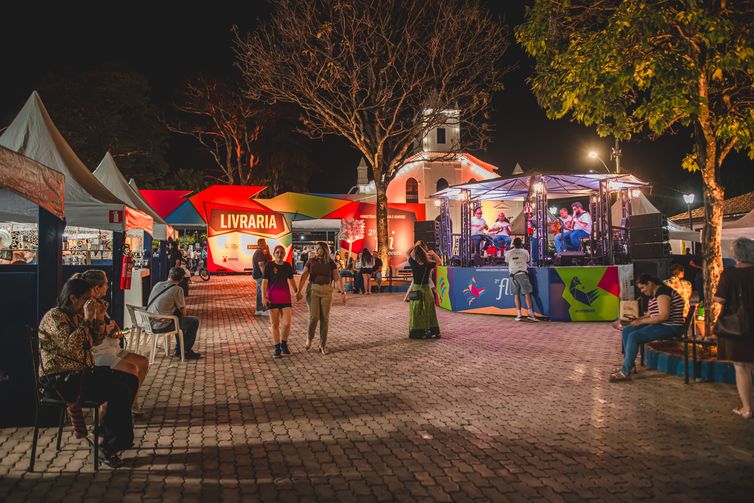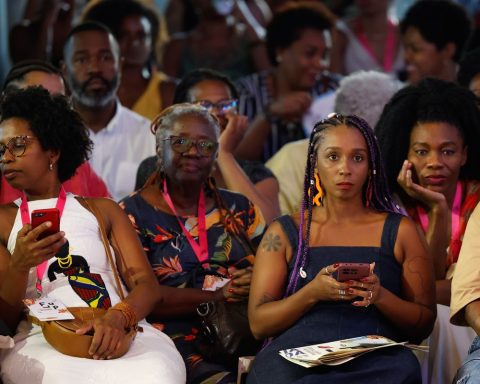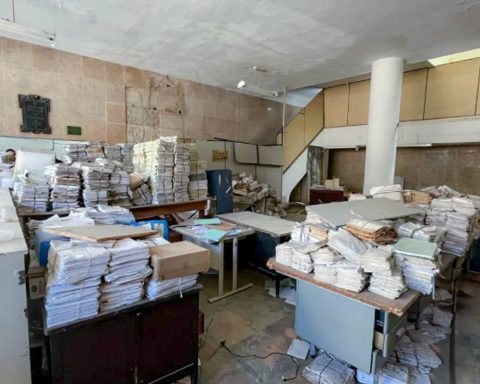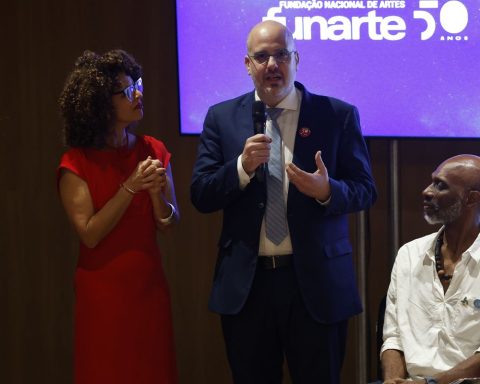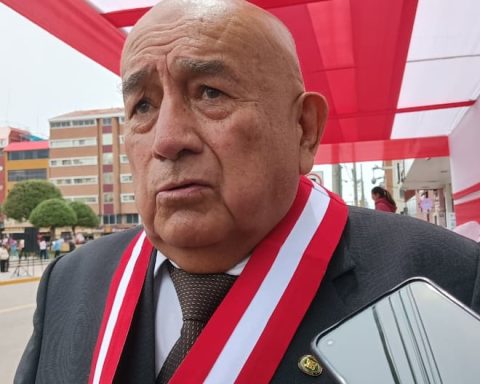How many stories can fit into the invisible walls? Students from the public and private schools of Paracatu were encouraged to answer this question. After visiting the exhibition Invisible Walls: Black Teachersthey were invited to develop a fanfic, that is, to invent stories based on existing ones. The idea was to reveal talents, as well as promote a taste for reading and writing.
The awards ceremony took place this Saturday morning (31), as part of the Paracatu International Literary Festival, and celebrated the winners of the drawing and writing categories. There were 18 winners in the six categories of the competition.
Bárbara Kamyllia Tenório, 17, won first place in the category for students aged 15 to 18. She is in her third year of high school and studies at the Neusa Pimentel Barbosa State School. Her essay was titled “An indispensable woman.”
“I was very surprised to win first place. I knew I was on the podium, but I never imagined I would be the first. I wrote about a black teacher and about breaking down walls, breaking down barriers. Because being black in Brazil is very difficult, because of our history, and having the strength to break down walls, as we saw in the exhibition, is very beautiful,” she says.
Portuguese, writing and literature teacher Kélia Nunes Rabelo, followed Bárbara’s process and said that it was very difficult to select the text, given the quality of the texts produced.
“We visited the exhibition, held an outdoor class and were surprised by the quality of our students. From the beginning, we were confident of winning first place, because Bárbara’s essay was very good, original, creative and I think it fulfilled the purpose of the competition.”
With the title “The Heroine of Education,” Andressa Gabrielly, from the Altina de Paula Guimarães State School, won third place in the 12 to 14-year-old category. She enjoys reading and writing and has participated in other essay contests. “I used teacher Laisa as the main character and her superpower is knowledge and education. Teachers may not have the power of invisibility or flight, but they pass on all the knowledge they have.”
Andressa’s school principal, Sueli Batista Gomes, believes that the support of the school, the teacher and the family were fundamental. For her, what remains from Fliparacatu is “immeasurable in the culture, knowledge and art that is brought to children and teenagers”.
The second edition of the Essay Prize had 44 entries and 47 essays. Around 32 thousand students were involved. The first places received cash prizes of R$300, R$500 and R$1 thousand. The judging panel was composed of journalist Cláudio Oliveira, historian Helen Ulhoa Pimentel and professors José Ivan Lopes and Vinícius Paz de Araújo.
Invisible walls
Curated by quilombola leaders Rose Bispo and Kassius Kennedy, the exhibition pays tribute to 21 black teachers from the public school system in Paracatu. The exhibition is organized by the Public Prosecutor’s Office of the State of Minas Gerais, through the prosecutor of Paracatu, Mariana Leão.
Selma Bispo dos Anjos Silva, one of the chosen ones, says that it was indescribable to participate and says that it was wonderful to tell her story and the racism she suffered. For her, it is a project that will change the history of Paracatu and the black people.
“Being invited was a surprise. Because teachers are not usually honored, especially black teachers, with a common history and, for most, an unimportant history. I felt it would be a way to show society that we can do anything. And also to honor our ancestors. The feeling we had at the inauguration was that there were several generations there with us.”
Selma teaches elementary and preschool at the Maria de Trindade Rodrigues municipal school in the rural area of Paracatu. The school is run by Jean Carlos dos Reis Silva, 11 years old, who won the category for people with disabilities with a drawing in which he portrayed students holding hands with their teacher. Jean said he is “very happy” with the award and intends to continue drawing.
For Selma, having the story retold by the students was very special. In one of them, she was portrayed as a princess; in another, she was compared to Carolina Maria de Jesus. Finally, she also remembers that one of the students, aged five, saw the photo in the exhibition and asked: Auntie, are you black? And Selma replied, “Yes, we are, are you black too?” She looked at me and said: hey, I’m the same color as you, so I am, right?”
Conceição Evaristo, who began her career as a kindergarten teacher in Rio de Janeiro, said that competitions like this are “the highlight of literature events”.
Conceição highlighted the importance of honoring black teachers as a historical rescue, and especially black female teachers.
“Perhaps the first teachers were black women, inside the big house. They took care of the big house’s children. They played the role of educators, including of the language spoken in Brazil,” said the writer.
At the end of the awards ceremony, Ailton Krenak, the Festival’s honoree, gave some affectionate advice to the children.
“Keep your hearts where they have always been: safe. Your beauty is what gives meaning to the world. Drawings, texts, that is the meaning of literature, drawing, art. Welcome to this incredible world, full of invisible walls, which you will help to dismantle,” said Krenak.
*Reporter traveled at the invitation of the festival organization


